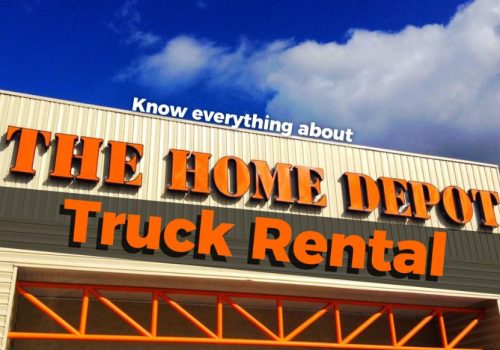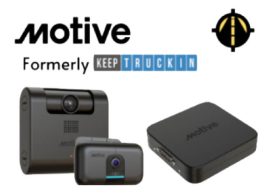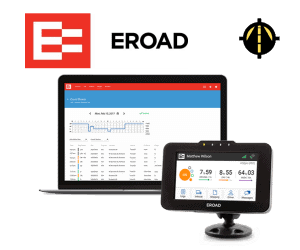The IoT Fleet Management Market will continue with the expected growth of the number of active use systems at a constant annual growth rate of 15.5%. It sounds pretty high, right?
But you might be wondering, what is IoT and what does it have to do with Fleet Management?
IoT or the Internet of Things is when we connect objects and tools to the internet in order to improve their productivity and performance. In the same way that we can find smart lighting, alarms, and other technology to enhance our home; we can connect our fleet to the internet to become a “Smart Fleet“.
For example, older trucks are now being replaced by “smart trucks” with the Internet of Things (IoT) and Machine-to-Machine (M2M) systems as well as cellular communications technology.
And this helps to relay critical information for proper fleet management operations.
Looking Ahead: The Future of Fleet Management
These trends are expected to expand as IoT telematics promotes more automated business models, essentially revolutionizing fleet management in the coming years.
Bringing us to recent data: The global IoT fleet management market, which was valued at a hefty $6.4 billion in 2021, is forecasted to soar to a staggering $16 billion by 2031, marking a Compound Annual Growth Rate (CAGR) of 9.8% from 2022 to 2031.
What is The Role of IoT in Fleet management?
Fleet management goes beyond mere tracking and maintenance of vehicles. It offers a comprehensive, cost-effective, fast, and accessible approach to managing not just the vehicle, but financing, driver management, and other aspects too. This helps fleet owners to diminish risks linked to staff costs, operations, and other factors.
IoT offers real-time data with the aid of IoT sensors in fleet management.
And all these real-time data help in the following ways:
- Monitor the driver’s actions
- Track vehicle performance
- Deliver traffic information
- Provide insight into the Vehicle average speeds and other analytical data to take swift decisions to increase fleet efficiency and productivity. Etc.
The fleet work system, on the other hand, incorporates a set of features like fleet Telematics, Maintenance planning, software, finance, vehicle monitoring, diagnostics, and general management of fleet drivers.
A fully integrated system, IoT fleet management provides effective maintenance plans, and is particularly beneficial to businesses heavily reliant on transportation of goods and services, boosting their productivity and efficiency by integrating commercial, technical, or operational requirements and restrictions.
Connectivity for Telematics Fleet
IoT Fleet Management allows application implementation that can detect vehicle problems. As a result, it’ll alert drivers and fleet managers immediately of maintenance needs to prevent costly downtimes.
IoT in fleet management also increases the performance and effectiveness of fleet managers. And thus, making the most of a telematics device reliable depends on connectivity.
 How does IoT Assists in Fleet management?
How does IoT Assists in Fleet management?
As never before, IoT technology continues to evolve and connect trucks and drivers. And the effect is new efficiencies and progress in the operation of fleet companies.
This happens at both the high level of a company as well as the vehicle level.
General data provide fleet managers with a simple and fast overview of the entire fleet at a high level. As a result, aggregate trends can be tracked, and improvements made to improve efficiency:
- For example, a fleet manager might look at the points in each vehicle’s route where vehicle idling is considerable and plan and test better optimal routes. And this will, in turn, make fleets more effective and save money simultaneously.
- The number of accidents and locations could also be used to classify places with unsafe driving situations. And this helps fleet managers decide about the best routes.
- Metrics such as driving habits and fuel usage at the vehicle level provide measures of fleet efficiency. Drivers involved in speeding, excessive braking, rapid acceleration, and other dangerous behaviors may be identified and coached.
- Additionally, tracking fuel consumption with the aid of telematics devices will minimize waste and possible fraud.
There are also distinct advantages of IoT fleet management solutions.
IoT helps promote compliance with safety and environmental laws, track the efficacy of fuel, and idle policies, and improve the vehicle’s value through actionable steps taken for preventive maintenance.
How Does Fleet Management IoT Device Minimize Costs and Save Lives?
Fleet management benefits from IoT device advancement.
IoT solutions provide an opportunity to get in touch with fleets. And this gives fleet managers remote, comprehensive insights into the fleet activities, leading to better business strategy.
The enthusiasm for future information significantly improves the feeling around the Internet of Things (IoT).
IoT-based fleet management provides stakeholders with a deeper understanding of fleet operations. And this understanding helps them to make better decisions for their fleet companies.
To make the best use of this modern technology, fleet needs must be prioritized, and fleet managers must understand what strategies for fleet management are feasible.
How do IoT Applications help in Fleet Management?
As mentioned previously, fleet management has so many components and ample opportunities for data collection.
Below, we’ll explain the available options based on the fleet needs to find the most relevant, which you should explore further.
Management of drivers
If you’re focused on drivers, you’re likely to spend time looking for drivers’ safety, compliance with recommended safety regulations, and taking strategic decisions while driving.
In this area, you can spend cash on the right IoT solutions:
Predictive Weather Analytics
You can receive real-time data on your drivers’ weather conditions and correct them in real-time. Fleet vehicles Sensors along your routes will provide the most detailed weather data to maximize timely delivery.
In-cab analytics
To ensure the performance and accountability of your fleet. Your business does not need a reputation for having unprofessional drivers. And if your fleet crew is making their delivery times late nights, you should be aware.
Maintenance of Vehicles
You are trying to keep your fleet vehicles in good condition (and safe) while, at the same time, maintaining a budget. You need to look into IoT-based fleet management solutions that feature the following:
Preventive Maintenance of Vehicles
Preventive maintenance of fleet vehicles provides information on factors such as tire pressure and engine health. As a result, fleet managers can receive standard diagnostic engine codes from the fleet vehicles. And this enables them to identify problems before they happen.
Automated signals and Early Warning are sent by sensor-equipped vehicles when the tracked parts require maintenance or are approaching failure. Alerts for Low battery as well as engine maintenance may also aid in preventative maintenance;
All these factors help vehicles to operate safely for longer periods.
Remote maintenance of fleet Assets
Fleets are costly to acquire and maintain, so every asset is essential. IoT enables fleet managers to track fleet vehicles’ health for which physical access or daily updates are not accessible.
The Internet of Things allows fleet companies to track regular activities through cloud-based software. And this also aids the fleet manager to control fleets just about anywhere in a remote region.
The IoT-based fleet management is also useful when the vehicles are struggling in poor weather. Automatic alerts and messages help make sure that the trucks are sent, or the driver is notified on time of bad weather through alerts.
Get insights into Fleet Performance
Fleet companies gain access to vast quantities of data through different sensors. And this enables them to gain a realistic insight into vehicle driver compliance, vehicle speed, idling and driving patterns, etc.
This knowledge will help businesses make fast decisions for immediate improvements in real-time. Also, these insights can, however, help to navigate the entire supply chain efficiently.
Automation
IoT helps fleet operators to automate different procedures and trip preparation in fleet management.
For example, if a vehicle has a fault and not functioning correctly, the fleet management IoT device can automatically send notification alerts to tow trucks and the nearest service stations.
Automatic alerts are sent to fleet drivers in severe weather to help them in rerouting, etc. In the sense of developing solutions and, in turn, helping create an intelligent transportation system.
These systems generate warnings and display messages, which allow fleet managers to schedule their fleet vehicle routes. It also helps to plan a journey based on information gathered on the road, traffic, vehicle speed, etc.
Automated fleet management often allows a fleet manager to detect possible issues earlier to mitigate risk before going beyond manageable limits.
Green Fleet Environmental Initiative
Every fleet company is looking for ways to minimize the environmental impact of the fleet. And this helps to be compliant with the law and become environmentally friendly.
Investing in IoT for fleet management help to:
1. Minimize Truck Idle Time and Boost Fuel Efficiency
The use of the IoT in fleet management helps ensure that the fuel is only consumed when needed. These could mean optimizing roads to avoid losing gas in traffic or tracking driver habits for drivers’ best practices to manage fuel.
The driving style and driving actions usually affect fuel efficiency considerably, and the average speed and so on affect fuel performance.
Fleet managers can track all such data through embedded sensors using IoT in the fleet management system and work with drivers to increase fuel efficiency.
2. Environment-Friendly Operations
A study shows that idling vehicles release more than 10 million tons of carbon dioxide into the air!
The driving or idling of vehicles beyond the speed limit is detrimental to the environment. And also, it often contributes to unnecessary fuel consumption and fuel costs.
The fleet company could easily monitor driver activities with IoT fleet management. And this will enable them to receive automatic near real-time updates; this helped them immensely to reduce unacceptable behaviors.
3. Improve Performance of The Vehicle Engine
The engine is among the essential parts of the vehicle structure. And Fleet vehicle performance has a very significant effect on the overall productivity of the fleet.
In those days, when IoT was a key term, many forward-thinking companies initially introduced ‘Remote Monitoring & Diagnostics;
A complete IoT solution aimed to track and evaluate vital engine parameters from a distance, alert for diagnostic error codes, and further in-vehicle data acquisitions.
All this information significantly contributed to innovative technology.
What are the Benefits of IoT in Fleet Management?
IoT Help to Manage fleet in fleet management in three main technologies – RFID, GPS, and OBD II.
GPS and OBD II help gather real-time data on the repairs, routes, and driving conditions of vehicles, while RFID helps monitor and track goods.
Provides Greater Visibility
The integration of IoT in fleet management collects data from various sensors, with one of the standout innovations being the Motive 360 Omnicam.
This AI-powered dashcam provides an unparalleled, distortion-free 360-degree view, ensuring maximum visibility without blind spots. The Omnicam guarantees impeccable imagery even in challenging lighting conditions.
Furthermore, it’s fortified with motion detection, offering real-time alerts for suspicious activities. Voice control augments its ease of use, while its 300mAh battery ensures uninterrupted recording. With a high-definition resolution of 1920*1080, connectivity options via Wi-Fi and Bluetooth, vast storage for documenting accidents, and the potential for deriving operational insights and aiding driver training, the Omnicam stands out as an indispensable asset for fleets.
In today’s fast-paced environment, fleet managers need more than just positional data of their vehicles. The intricacies provided by the Motive 360 AI Omnicam offer them a profound understanding of each vehicle’s immediate surroundings.
Such depth of information not only mitigates risks but also significantly enhances operational efficacy and responsibility, setting a new standard in fleet management.
Ensures Immediate Improvements and Prompt Decision Making
When IoT is correctly implemented, it ensures immediate improvement in efficiency through efficient allocation of resources.
Rapid knowledge collection and sharing will help the fleet function in real-time to make immediate changes and fast decisions and actions. It can minimize idle time and speed and reduce the excessive wear and tear of vehicles.
Using Huge Data
As we all know, a fleet of trucks generate enormous information such as recorded miles, fuel consumption, vehicle use, speed tracking, and even more.
Before IoT for fleet management evolved, the fleet manager had to manually gather all data, leading to severe shortfalls. However, IoT sensors’ arrival for fleet management integrates office technology with vehicles and the driver in real-time.
It offers fleet operators plenty of time to collect data, evaluate it, and understand vehicle problems.
Eliminating The Risk of Delivery Delays
Delays in deliveries affect the fleet company’s reliability and reputation. Schedule variance significantly impacts the efficiency of the company’s services.
If a fleet manager is aware of the causes of delivery delays, he will take the necessary steps.
And thus, improve the efficiency of the service you offer in the immediate future.
The fleet company will make business decisions in a good time and get ahead of its competition with the right IoT Fleet Management solution.
Creates Extra Value
Wireless management systems provide the end consumer, and the service provider added value.
The installation process is faster and easier to implement. It takes an average of 20 to 30 meters of cables to wire both ends of the cabin to the truck. These cables require additional costs for installations and the entire wiring phase.
It is also helpful for end users because drivers could not even find cables, disrupt, interrupt, or compromise the tracking device.
Route optimization
IoT enables fleet managers to know the route a driver takes through remote tracking.
In addition, you also can increase travel performance by optimizing the road.
Best IoT Fleet Management ensures company performance and enhances workflow and sales.
Using IoT, implementing a fleet monitoring system, and making a profit-making decision is simpler.
Assets Loss prevention
Tracking technology allows fleet companies to track the conditions of the company assets closely.
Sensors can identify when doors are open or even when temperatures change, for example.
And this alerts fleet managers to possible failure or theft of goods.
Also, these sensors can, however, assist fleet managers in notifying maintenance needs.
For example, if climate-controlled vehicles’ temperature continues to rise too much, the cooling system may be a problem that required urgent attention.
Improved road safety
Road safety is no less a big concern for fleet managers.
The death toll in motor vehicle collisions in 2017 rose to 40,100 fatalities, at the cost of $413.8 billion estimated in associated costs. And These costs include medical expenses, payroll and productivity losses, and property damage.
Fast forward to the present, and we see a radical transformation in how safety is approached in fleet management. The Internet of Things (IoT) is paving the way to a safer future on the roads. IoT systems, by leveraging a vehicle’s OBD II port, can capture crucial data on driver behavior. This data then serves as the basis for constructive feedback to drivers, coaching them on limiting high-risk maneuvers such as over-acceleration, sharp cornering, and enforcing the use of seatbelts.
However, the potential of IoT for road safety doesn’t end here. A new generation of IoT devices equipped with advanced sensors can detect signs of driver fatigue – a common contributor to road accidents.
Leading vehicle manufacturers such as Mercedes and Volvo are stepping up to this challenge, integrating innovative safety mechanisms into their fleets. These mechanisms monitor steering behavior and promptly alert the driver when deviations from the baseline pattern are detected, ensuring quick corrective action.
This profound shift in vehicle safety management signifies a promising future for road safety, fostering an environment of enhanced vigilance and proactivity.
Conclusion
Fleet Management Systems are a process that allows fleet managers to control fleets and assets at any level. The IoT fleet management solutions and telematics market is booming; development and expansion are expected to continue well into the new decade. The Internet of Things has influenced almost every sector, and the management of the fleet is not unaffected. IoT fleet management systems wirelessly link fleets to gain insight into improved efficiency and company operations. Fleet telematics systems help build software capable of detecting and solving vehicle problems to mitigate expensive repairs.
Finally, the IoT Fleet Management solution enables the fleet industry to move toward connected fleets. Iof facilitates efforts to make a green commitment to cost-effective initiatives driven by data and mobilize programs that save the budget and the world.
Connecting your fleet enhances your drivers, tightens your budget, and makes your vehicle safer. All of this makes managing your fleet easier.


 How does IoT Assists in Fleet management?
How does IoT Assists in Fleet management?









 Answer 5 simple questions to request a
Answer 5 simple questions to request a